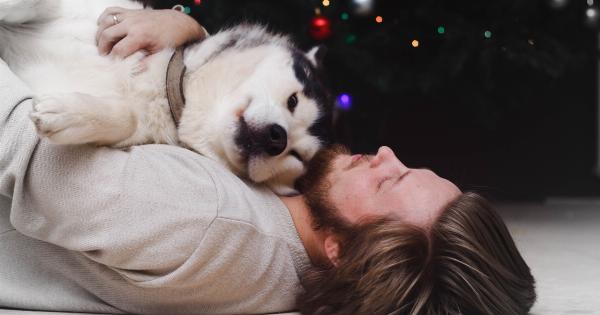As a dog owner, you may observe your furry friend sleeping for hours on end, and wonder about their sleeping habits. But did you know that your dog’s sleeping habits can actually reveal a lot about their overall health and feelings?.
What are the different types of sleep in dogs?
Similar to humans, dogs experience different stages of sleep. These stages are known as:.
1. Slow-wave sleep
Also known as deep sleep, this stage is when your dog is in a state of complete relaxation and their breathing and heart rate are slow and steady. During this phase, it can be tough for your furry friend to be awakened.
2. Rapid eye movement (REM) sleep
REM sleep is when your dog’s eyes move rapidly under their eyelids, and they may twitch or make noises. During this phase, their breathing and heart rate increase, and their brain is very active. This phase is often associated with dreaming.
How much sleep do dogs need?
The amount of sleep a dog needs can depend on multiple factors, such as their age, breed, size, and activity level. In general, adult dogs require around 12-14 hours of sleep per day, while puppies and older dogs may need up to 18 hours of sleep.
It’s important to note that not all sleeping is equal, and quality of sleep is just as important as quantity. Dogs who are not getting enough restful sleep may experience fatigue, lethargy, and a lack of energy.
What are the common sleeping positions for dogs?
Dogs can sleep in a variety of positions, each with their own meaning and possible health implications:.
1. Curled up
This position is when your dog is lying on their side with their paws tucked under their body. This is a common position for dogs as it helps them conserve body heat and protect their vital organs.
Dogs who sleep in this position are often feeling safe, secure, and relaxed.
2. On their back
When a dog sleeps on their back with their legs up in the air, it is known as a “sploot” position. This position is typically seen in larger dogs, and is a sign of extreme relaxation and comfort.
However, it can also be a cause for concern if your dog is struggling to get up from this position or is experiencing discomfort.
3. Scrunched up
This position is when your dog is curled up in a ball with their paws over their face and tail wrapped around their body. Dogs who sleep in this position are typically feeling anxious, and are trying to protect themselves from perceived danger.
4. Leaning against something
If your dog likes to sleep leaning against something, such as a wall or furniture, it can be a sign of insecurity or anxiety. This is because your dog is seeking the comfort and reassurance of a solid object.
What can your dog’s sleeping habits reveal about their health?
Changes in your dog’s sleeping habits can be an indication of underlying health issues. Here are a few common signs to watch out for:.
1. Snoring
If your dog has suddenly started snoring, it could be a sign of an upper respiratory infection, allergies, or obesity. It is best to consult with your vet to determine the underlying cause.
2. Restlessness
If your dog is experiencing trouble staying asleep or is restless during their sleep, it could be a symptom of pain, discomfort, or anxiety. It’s best to visit your vet to rule out any underlying health concerns.
3. Excessive sleepiness
If your dog is sleeping more than usual and is reluctant to wake up, it could be a sign of an underlying health condition such as diabetes, hypothyroidism, or heart disease. It is best to have your dog examined by a vet.
Conclusion
While your dog’s sleeping habits can be cute and entertaining to observe, they can also reveal a lot about their overall well-being.
By paying attention to your dog’s sleep patterns, you can detect any changes in their health and address them promptly.






























